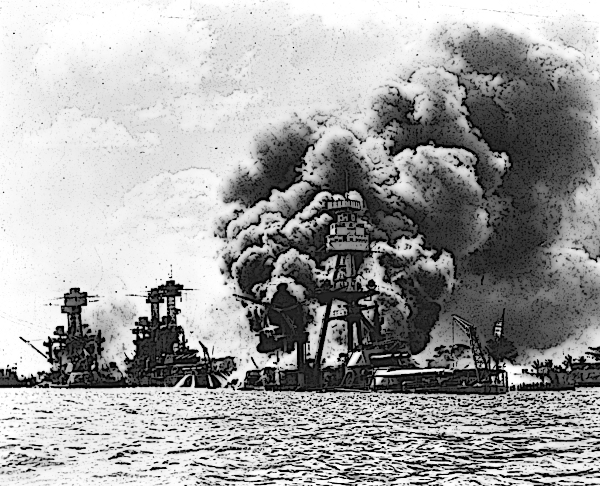Reasons for Pearl Harbor
The Pearl Harbor Attack took place near the end of the Second World War. It was a surprise attack by the Imperial Japanese Navy Air Service upon the United States. The U.S. naval base at Pearl Harbor, situated at Honolulu in Hawaii, was attacked by 353 Imperial aircraft in two waves.
The attack was launched from six different aircraft carriers. All eight U.S. navy ships were damaged, with four sinking into the depths of the sea. The attack took the lives of more than 2500 Americans, destroying 18 aircrafts and nearly 18 ships in total. The attack aimed to destroy the morale of the United States forces and beat them back.

The reasons for the Japanese attack on Pearl Harbor are listed below:
Strained Relationship between Japan and US
The tensions between Japan and the United States of America had been slowly mounting since the time of the Great Depression. The economic collapse across the world added to the heated relationship. Both Japan and the USA remained in a constant state of political tussle for the greater part of a decade.
Japan’s Need for Natural Resources
An island country, Japan increasingly lacked sufficient natural resources such as minerals, oil and steel for its development and expansion plans across South Asia. It hoped to seek such resources elsewhere through colonial expansion – and US was a power that could check these ambitions. Japan saw US as a hurdle in her expansionist goals.
Japanese Expansion and US Opposition
United States was actively trying to prevent the Japanese from taking over several countries in South Asia. Economic sanctions against Japan, including trade embargoes on aircraft exports, helped seal the crippling effects. The U.S was also actively supporting Kuomintang forces (the Chinese military) in this endeavor.
Japanese Hopes for a Surprise Advantage
The attack on Pearl Harbor was meant to be a preemptive strike against American presence in the region. Japan wanted to strike hard and deplete American resources, preventing America from further engaging in the Second World War. It had the opposite effect, however. The day after the attack on Pearl Harbor, the United States of America officially joined the Second World War on the side of the Allies.
Japanese Ambitions to Control the Pacific
When President Roosevelt moved the US Pacific Fleet from California to Honolulu (Pearl Harbor) in 1939, Japan felt threatened. Military leaders across the globe began to predict a war between the U.S. and Japan, suggesting that first offense was the only way to win the impending conflict. Japan did just that. The plan took months to come to fruition. If the attack had succeeded, Japan would have taken control of the Pacific.
However, the attack was ill-timed and poorly carried out. The Japanese bombers missed the U.S. oil tanks, ammunition sites and repair facilities. Not a single U.S. aircraft carrier was present during the strike. The failure would come to haunt Japan later, as the United States of America declared the very next day its official participation in the war and turned the tables on Japan during the ‘Battle of Midway’. This was a major turning point during the Second World War.
- World War 2 – WW2 – 1939
- 10 Surprising about WW2
- Anschluss
- Attack on Pearl Harbor
- D-Day Landings of WW2 Overview
- Famous Leaders in World War II
- German S.S *Schutzstaffel
- Hitler Youth – World War 2 *WW2
- Hitler’s Rise to Power
- Nuremberg Laws
- Reasons for Pearl Harbor
- Schutzstaffel
- The Causes of WW2
- The Normandy Invasion
- Top 10 Events of World War II
- What was the Luftwaffe?
- World War 2 Timeline